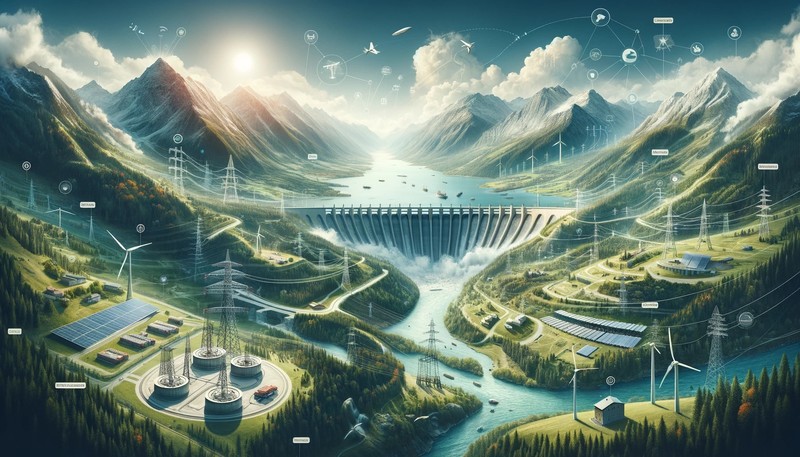Electricity market in Austria: A comprehensive overview
Austria's primary energy sources
Austria's energy sector is predominantly characterized by a diverse mix of sources, with a significant emphasis on renewable energy. The country has made substantial progress in transitioning towards a more sustainable energy system. The backbone of Austria's electricity production is hydropower, which contributes the largest share of the nation's electricity generation. This reliance on hydropower is facilitated by Austria's geographic features, including its numerous rivers and mountainous terrain, which provide ideal conditions for hydroelectric power plants.

Alongside hydropower, Austria has also invested in other renewable energy sources such as wind, solar, and biomass. These sources are increasingly contributing to the energy mix, reflecting Austria's commitment to reducing carbon emissions and promoting environmental sustainability. Despite the focus on renewables, Austria also utilizes a mix of fossil fuels and imports, though these play a lesser role compared to the dominant hydroelectric power.
Integration into the EU electricity market
Austria's electricity market is not an isolated entity but is intricately linked with the broader European Union (EU) electricity market. This integration plays a crucial role in the stability and efficiency of Austria's energy sector. Being part of the EU electricity market means Austria is interconnected with its neighboring countries through a network of cross-border electricity transmission lines. These interconnections facilitate electricity trade and contribute to the security of supply, allowing Austria to import and export electricity based on demand and availability.
This interconnectedness with other EU member states is a vital component of Austria's energy strategy. It enhances the resilience of the power system and allows for a more efficient distribution of electricity resources across the region. Furthermore, it supports Austria's commitment to the EU's goals of creating an internal energy market that is secure, competitive, and sustainable.
Challenges and opportunities in the Austrian electricity market
While Austria's electricity market has many strengths, it also faces challenges. The reliance on hydropower, although beneficial in terms of sustainability, presents vulnerabilities to climatic variations and environmental concerns. Seasonal fluctuations and climate change impacts can affect water availability, thus influencing hydropower generation capacity. This situation necessitates a balanced approach in energy planning, ensuring that other renewable sources can compensate when hydropower is less viable.
However, these challenges also present opportunities for innovation and growth in the energy sector. Austria's commitment to the EU's green transition goals encourages the exploration of new renewable energy technologies and the improvement of energy efficiency measures. This forward-thinking approach positions Austria as a leader in renewable energy adoption and paves the way for a more sustainable energy future.
Future outlook of Austria's electricity market
Looking forward, Austria's electricity market is poised for continued evolution. The national and EU-level initiatives aimed at promoting renewable energy sources and decreasing reliance on fossil fuels are set to shape the future landscape of Austria's electricity sector. Investments in renewable energy infrastructure, coupled with policy support, are expected to further increase the share of clean energy in Austria's electricity mix.
The ongoing digitalization of the energy sector also presents transformative potential. Advanced technologies such as smart grids and energy storage solutions are likely to enhance the efficiency and reliability of Austria's electricity supply, while also supporting the integration of more renewable sources into the grid. In conclusion, Austria's electricity market is at a pivotal juncture, with significant opportunities for sustainable growth and innovation in the years to come.
